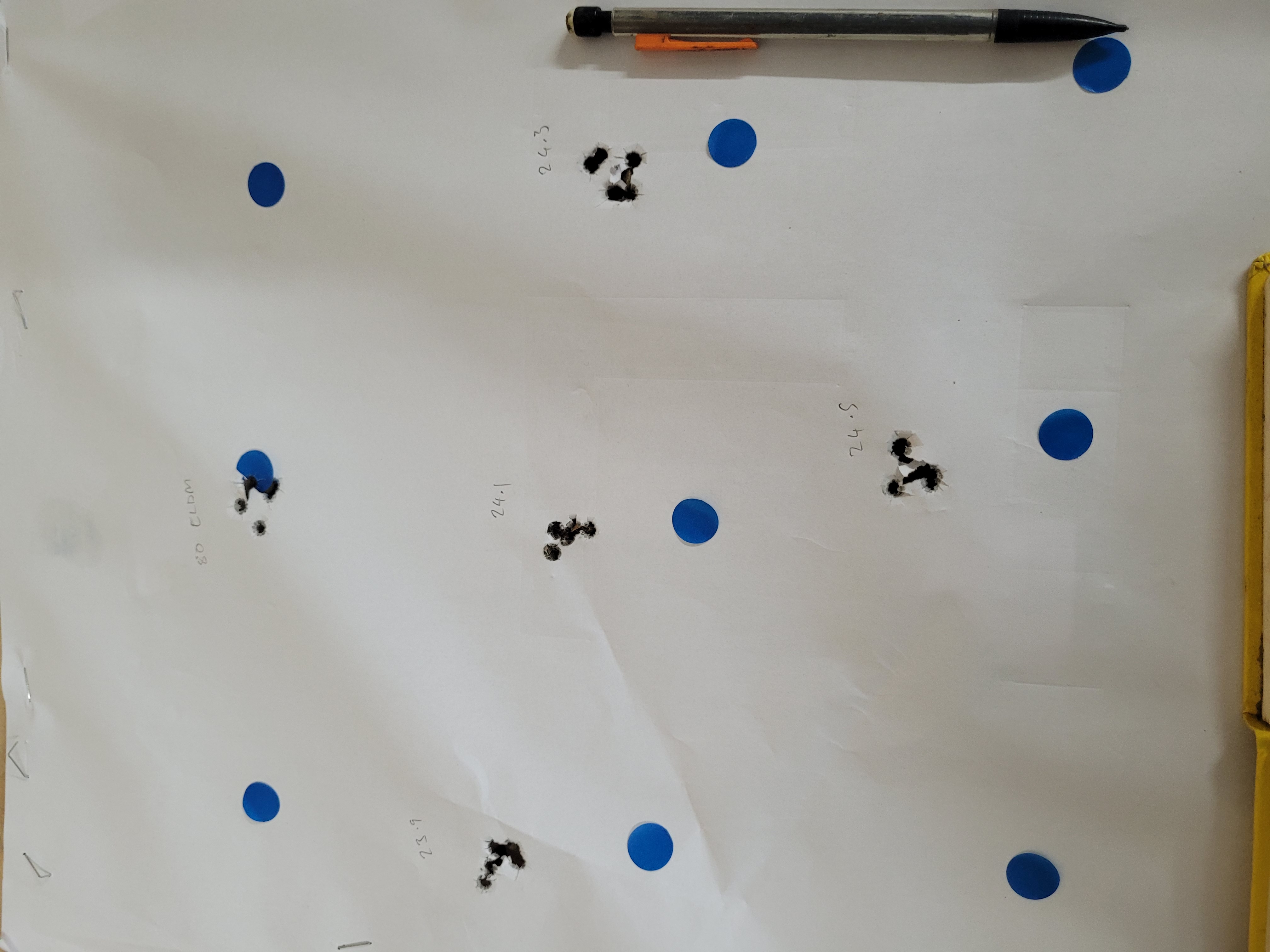Since the .223 on Deer thread goes so well, may as well start a .223 handloads thread.
I have never done any load development with this rifle before - I just shot the load as provided by @Kiwi Greg with it, with excellent results. For 3 years.
Finally got around to testing some 80gr @TARGEX. Good results - average under .5MOA across all loads. Cool looking rounds.
Powder is 2206H - load is over book max, do not use without working up.
18" BBL 1:8" twist
FC nickel brass 1x fired (factory)
CCI 450
Seated .010" off the lands (1.910" CBTO)
100M
20degC
ES/SD could use a bit of a tickle - but ok for my uses. May uniform flash holes and see if it tightens up
Group with the ELDMs (2208) isn't the best - destroyed the aiming point with the first shot... and the speed/ES has fallen off a little - these are the first rounds from a new lot of 2208 - might need a tiny bump up to get back

Welcome guest, is this your first visit? Create Account now to join.
Welcome to the NZ Hunting and Shooting Forums.
Search Forums
User Tag List
Results 31 to 45 of 58
Thread: .223 results
Threaded View
-
15-02-2024, 02:16 PM #1
.223 results
Similar Threads
-
first reload results...
By Larskramer in forum ShootingReplies: 3Last Post: 20-11-2019, 01:19 AM -
75 ELD-M Results
By SlimySquirrel in forum Reloading and BallisticsReplies: 16Last Post: 13-04-2018, 09:39 AM -
The results are in
By Mike H in forum Game Bird HuntingReplies: 58Last Post: 23-10-2015, 12:37 PM
Tags for this Thread
Welcome to NZ Hunting and Shooting Forums! We see you're new here, or arn't logged in. Create an account, and Login for full access including our FREE BUY and SELL section Register NOW!!




 121Likes
121Likes LinkBack URL
LinkBack URL About LinkBacks
About LinkBacks





 Reply With Quote
Reply With Quote


Bookmarks